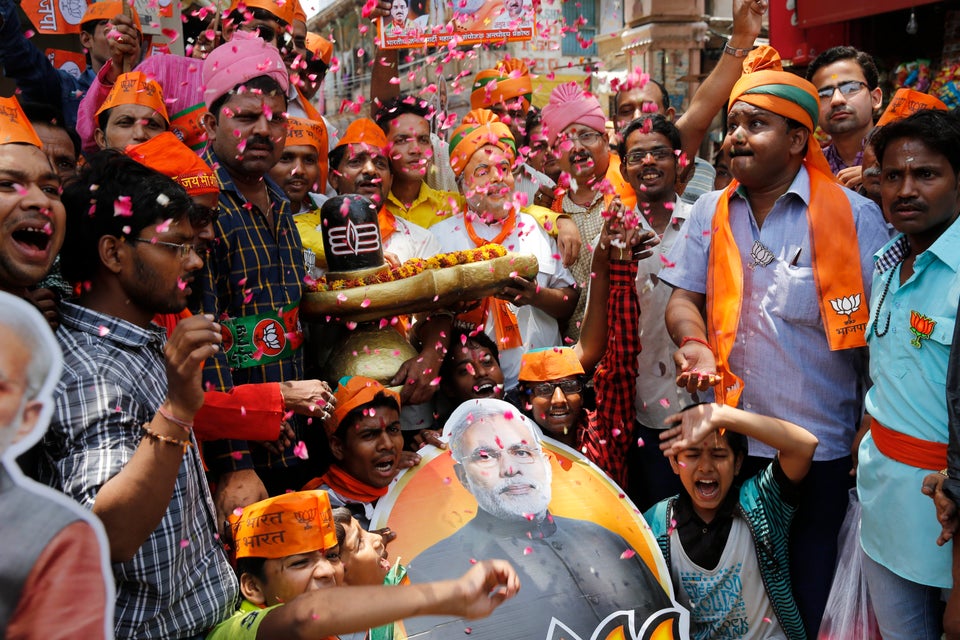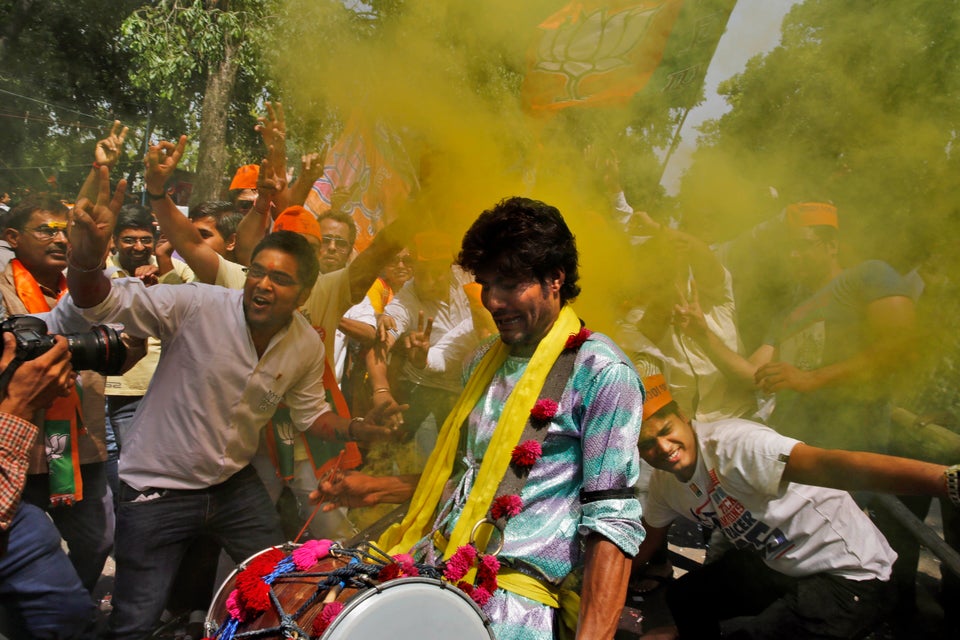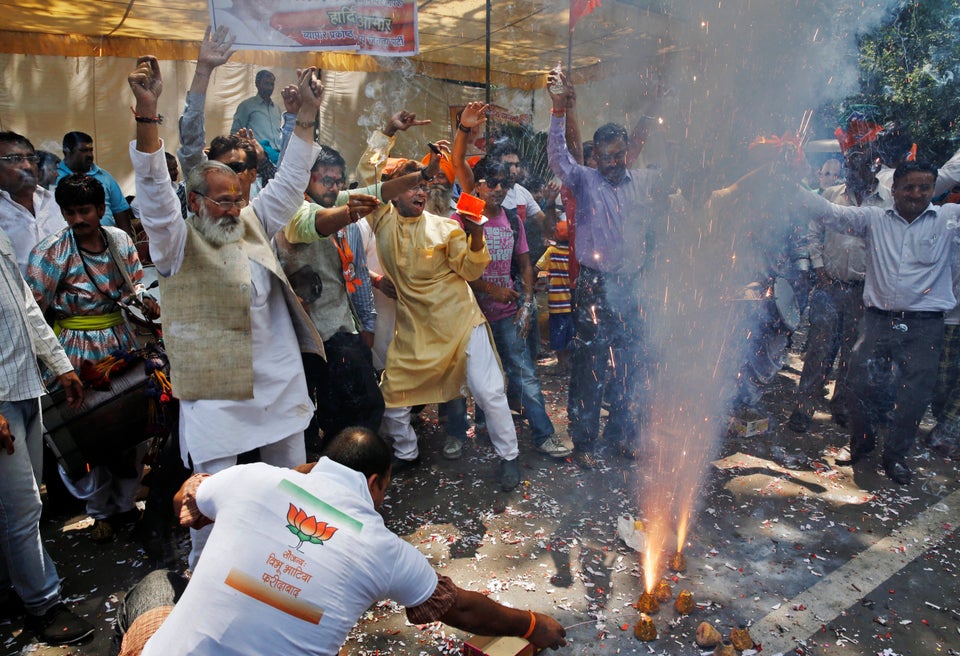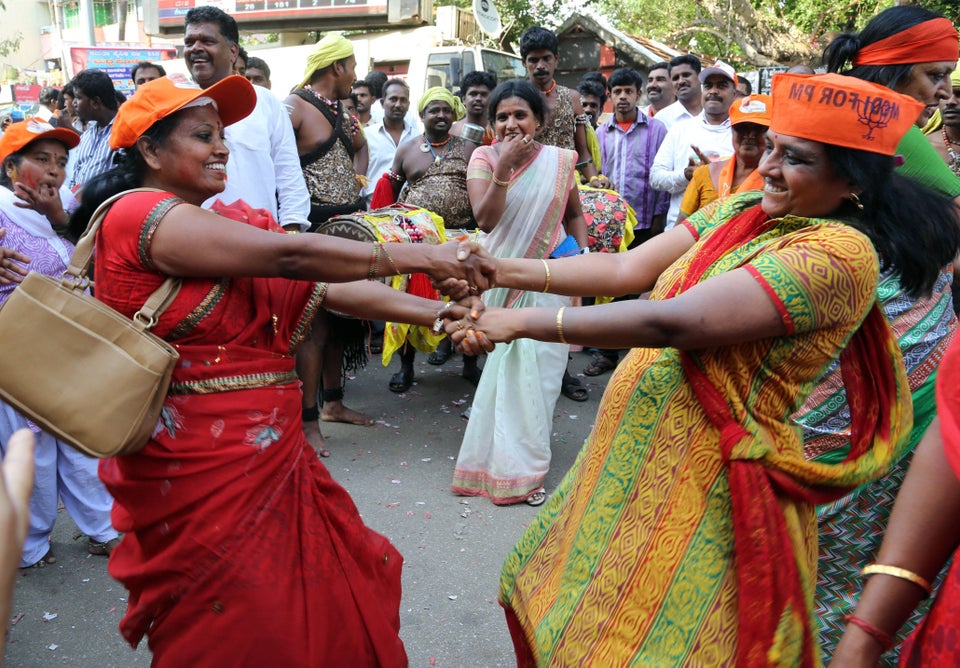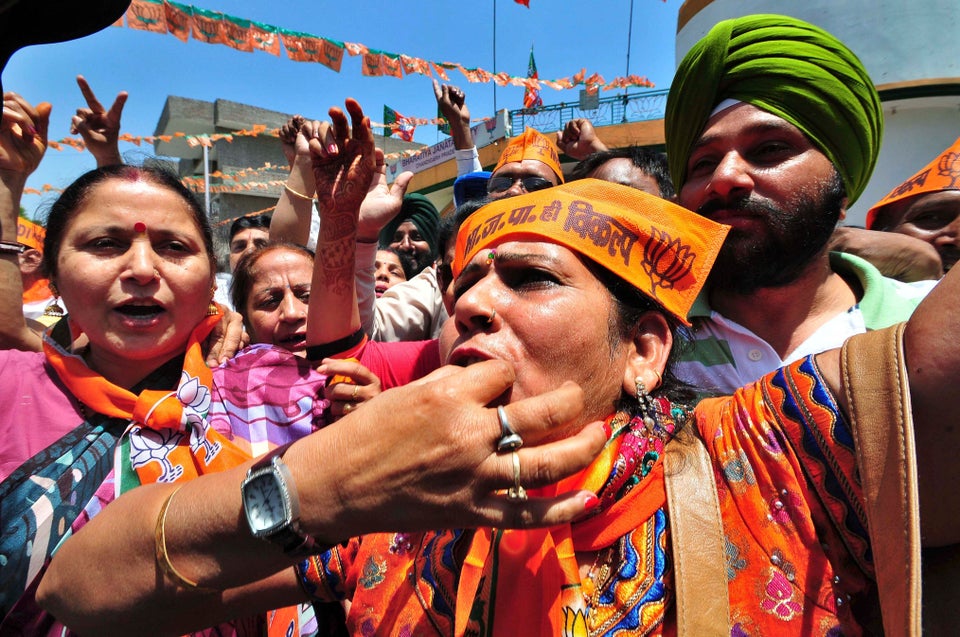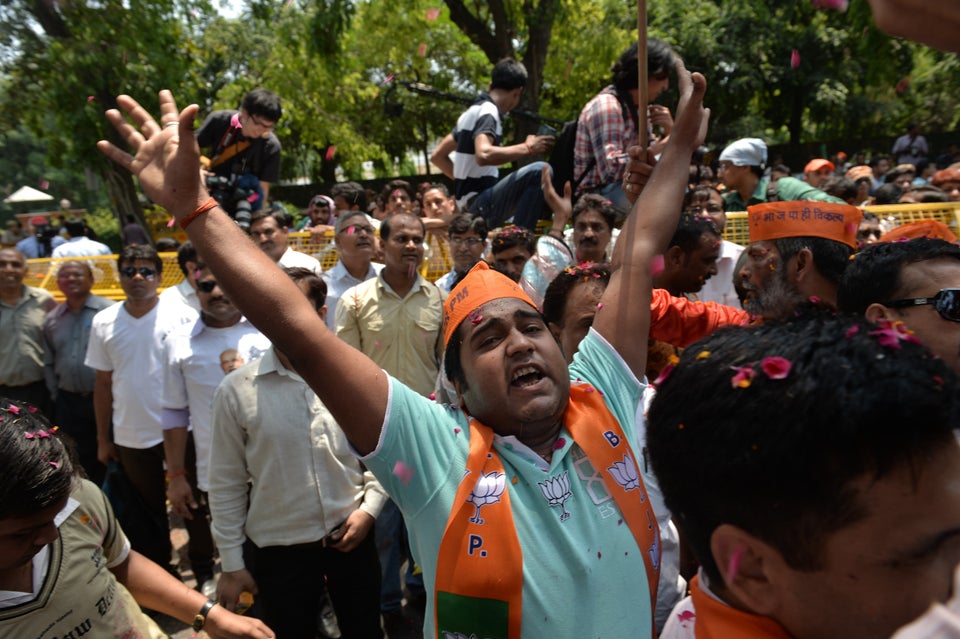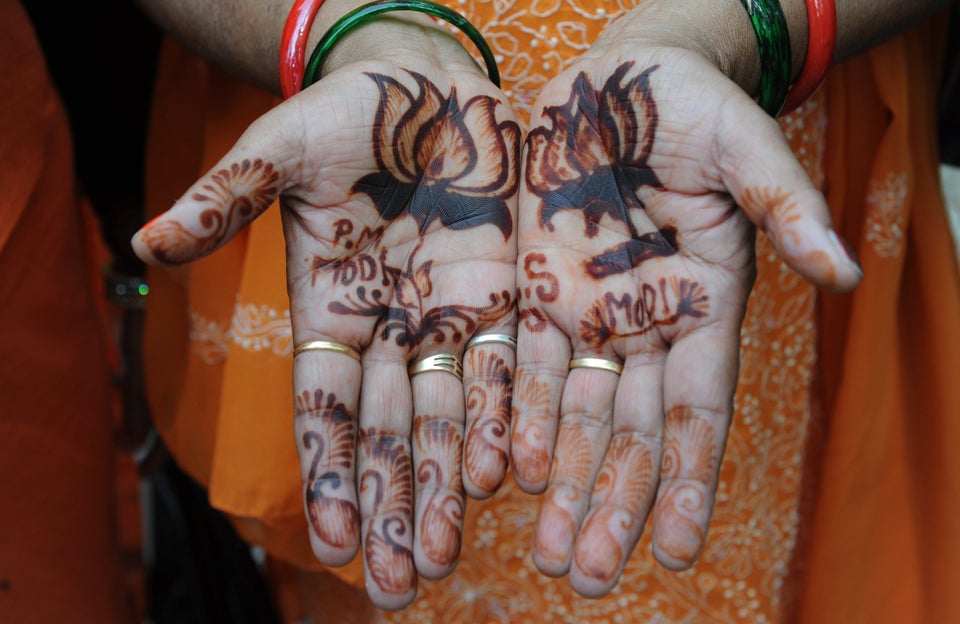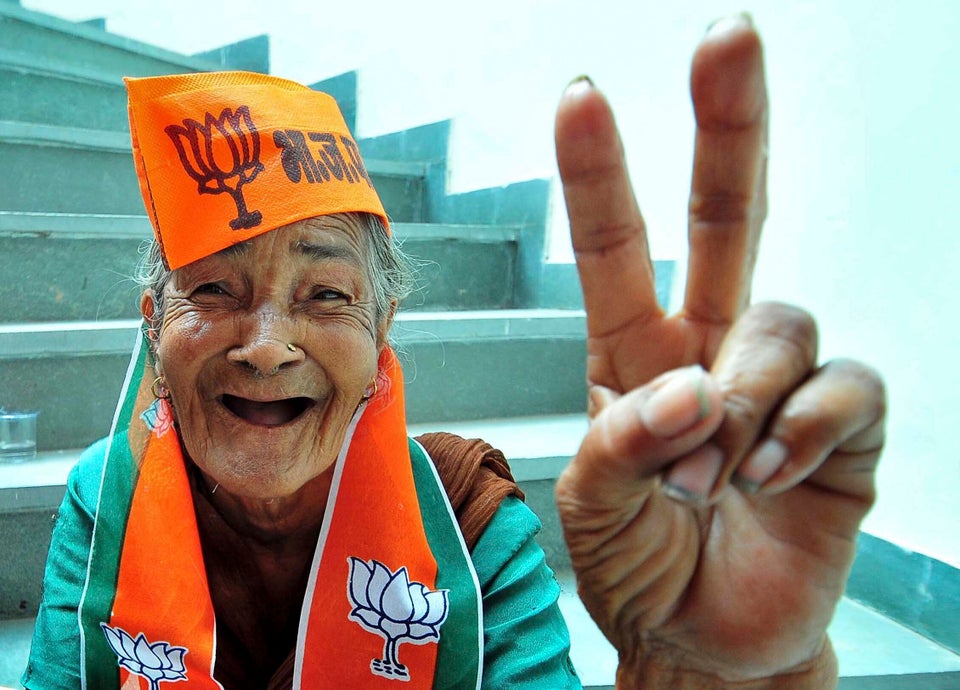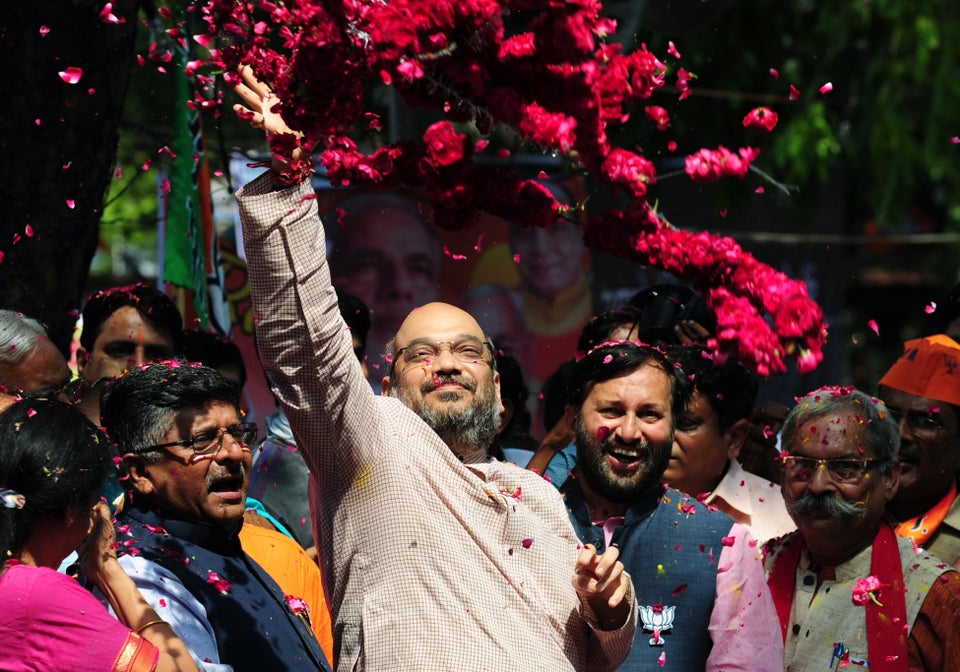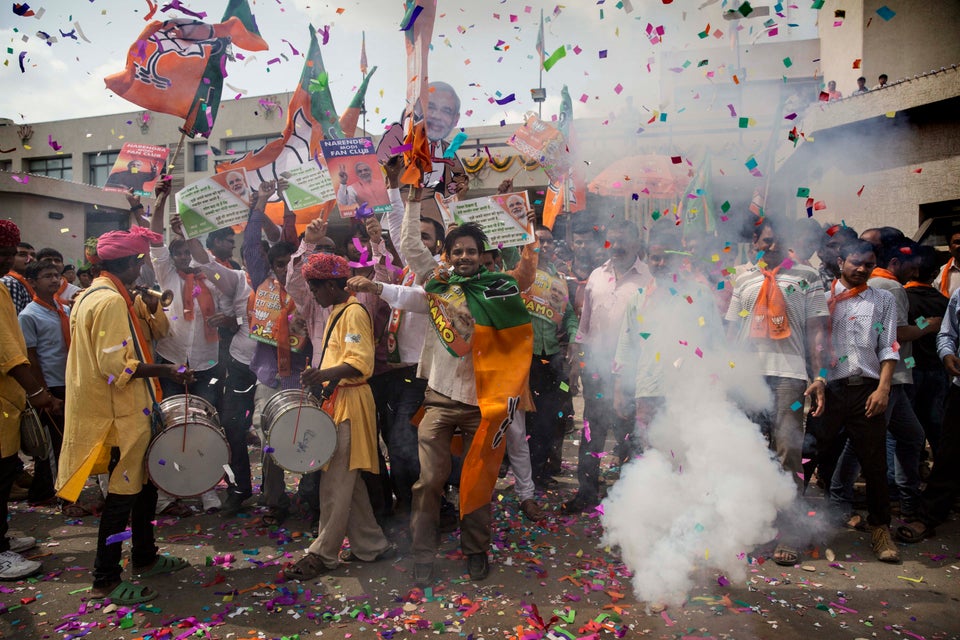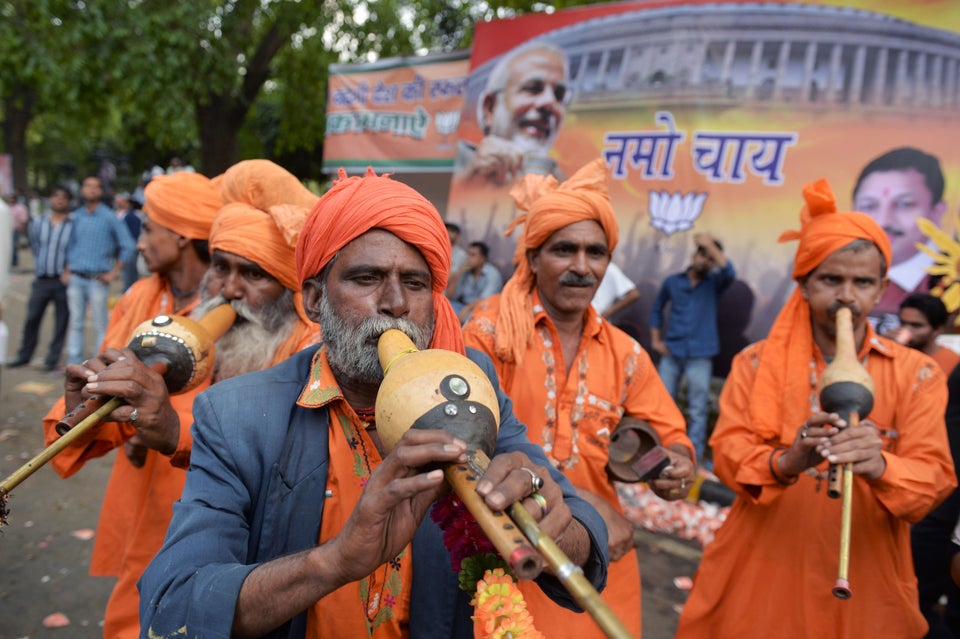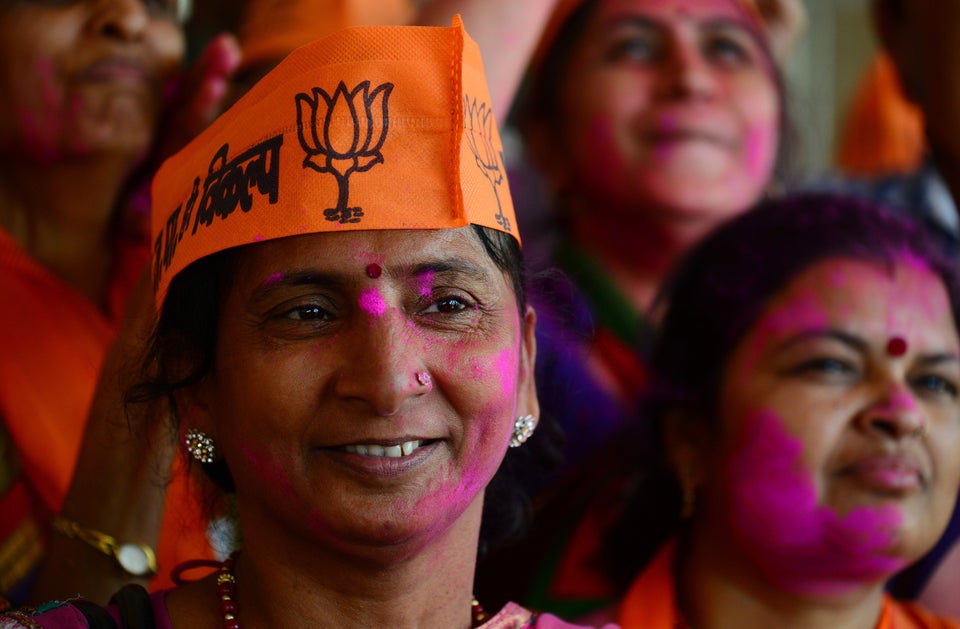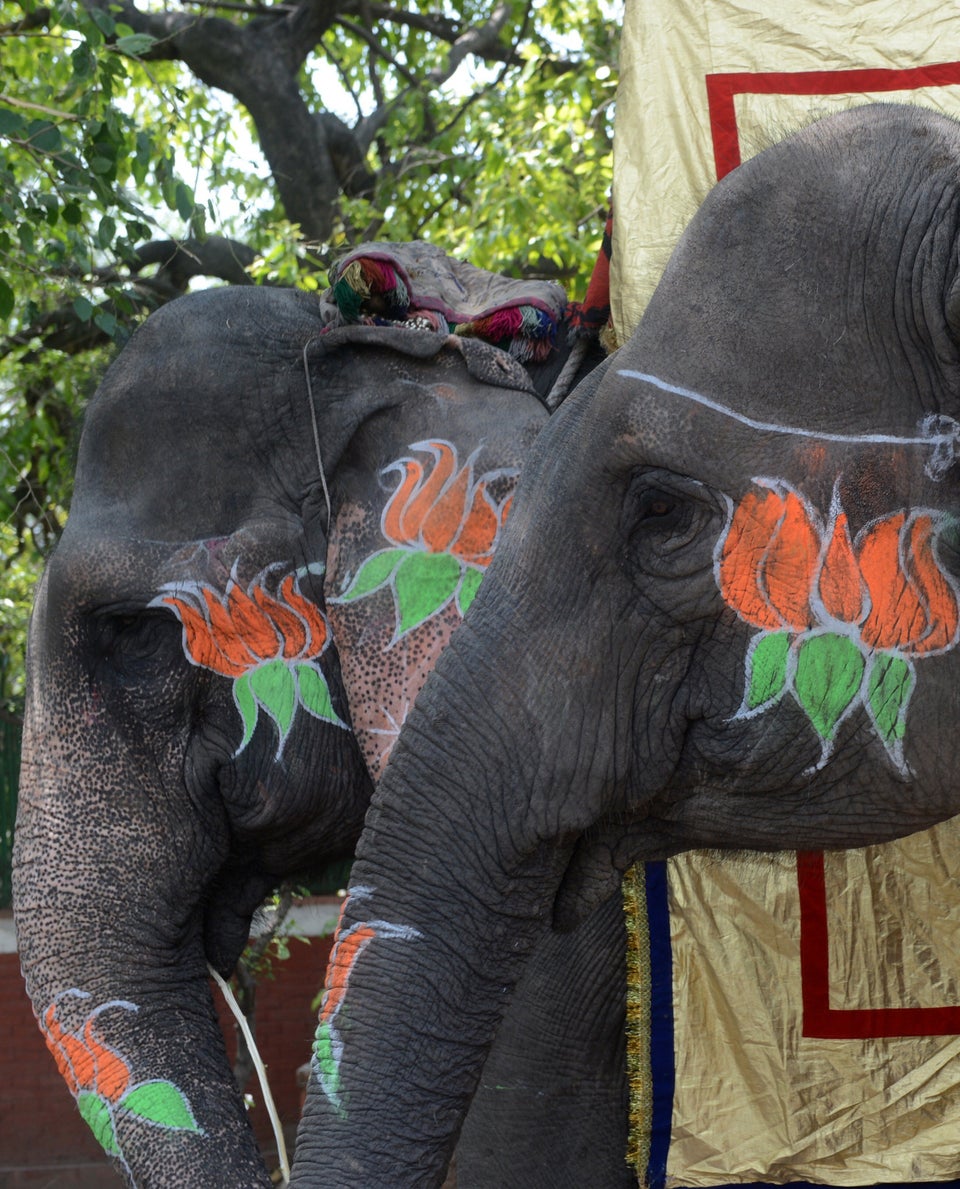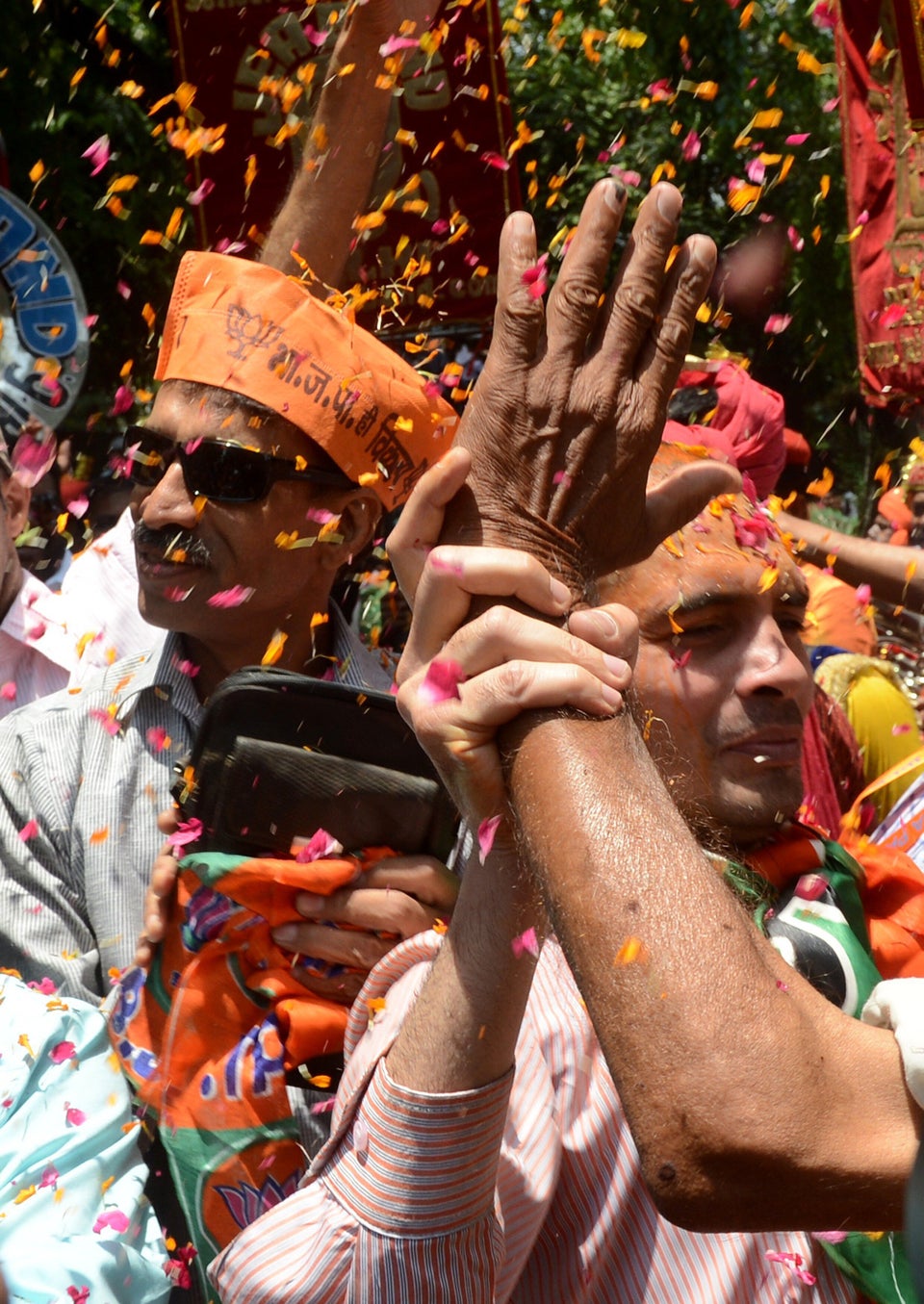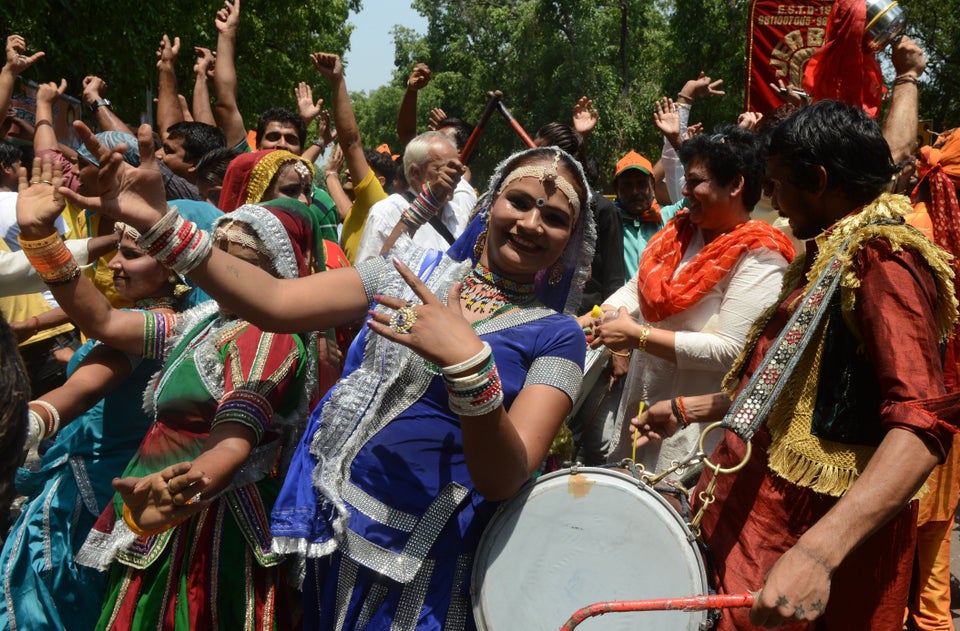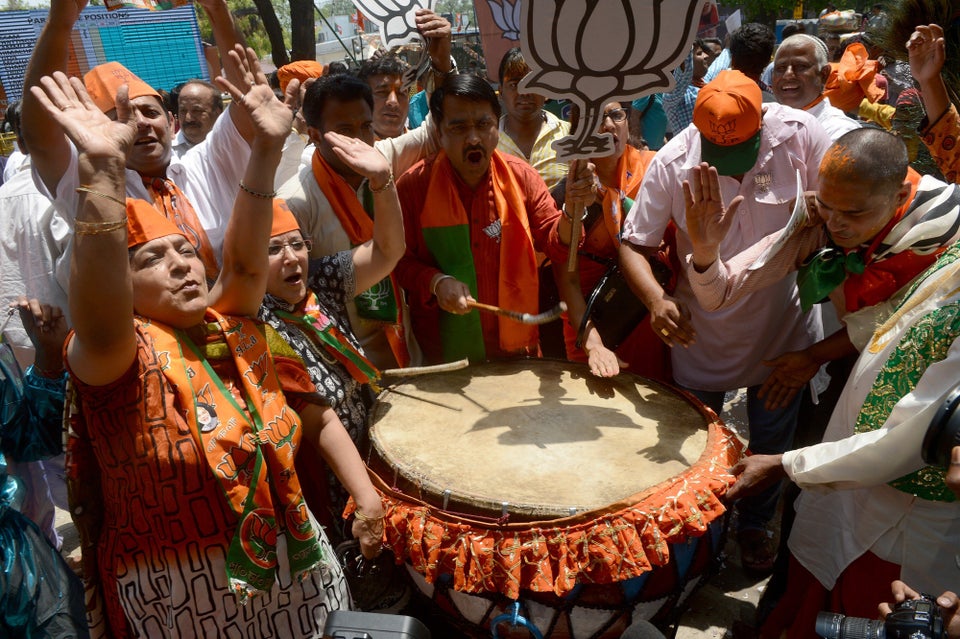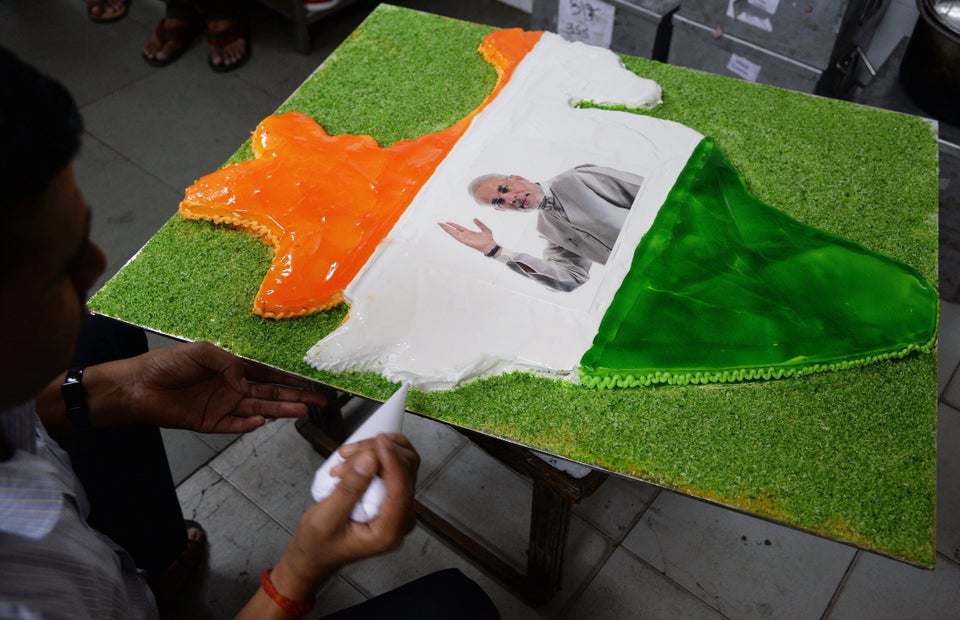
NEW DELHI -- During his spirited campaign for parliamentary elections held earlier this year, Narendra Modi, the right-wing Bharatiya Janata Party's prime ministerial candidate, hardly spoke about foreign policy issues. Other than a few sharp barbs he aimed at Pakistan, China and Bangladesh -- favorite targets of "nationalist Hindus" -- he kept his counsel to himself on this score.
But after his triumphant victory in the elections -- it gave the BJP a majority of its own in the Lower House for the first time in 30 years -- the initiatives Modi has taken to energize foreign policy have confounded his most acerbic critics. He surprised them when he invited leaders of South Asian countries for his government's oath-taking ceremony. His brief interactions with them, and especially with Pakistan's Prime Minister Nawaz Sharif, were a pointer to his priorities: he would walk the extra mile to ensure peace with India's neighbors and involve them in the region's economic and social development.
NOT GOING SO WELL WITH PAKISTAN
Things have not worked out well with Pakistan. Modi didn't take kindly to a meeting between Pakistan's High Commissioner in India and the Kashmiri separatists -- something that has happened time and again in the past without a murmur of protest from New Delhi. He called off the scheduled talks of the foreign secretaries of the two countries. This may have been a smart move given the unsettled political situation in Pakistan. But his government has signaled that engagement with Pakistan will continue.
The two prime ministers are expected to pick up the threads when they meet at the United Nations General Assembly in New York later this month. Needless to say, another terror attack in India emanating from Pakistan would escalate tensions between the two countries to a dangerous level.
BHUTAN AND NEPAL ARE MORE PROMISING
Modi's other moves to consolidate India's influence in its neighborhood have yielded promising results. His first visit abroad was to Bhutan, India's closest friend in the region, and his second to Nepal. In both countries he played his cards deftly. India, he said in substance, would not act as a big brother but as an elder brother. Even as he emphasized India's age-old cultural and religious affinities with them, he roped in hydro-electric and infrastructure projects.
The leaders of Nepal, in particular, were ecstatic about his trip. Modi accepted their long-standing demand -- a review of the 1950 Treaty of Peace and Friendship -- and, by not meeting the ousted King Gyanendra, he set to rest fears that India under the BJP's dispensation might want to restore the monarch as the head of a Hindu state.
Meanwhile, to strengthen India's engagement with its neighborhood and its "extended neighborhood," the foreign minister, Ms. Sushma Swaraj, travelled to Nepal -- to prepare for Modi's visit -- Bangladesh, Singapore, Myanmar (for a meeting with the ASEAN Regional Forum) Vietnam, Bahrain, Afghanistan and Tajikistan. She made considerable headway to help resolve contentious territorial issues with Dhaka, pushed for greater connectivity with every country she visited and offered to work together with them on major development projects. Enhancing cooperation to further their mutual strategic interests figured high on her agenda as well.
BUILDING BRICS
A significant outcome of her exertions was the decision taken at the Shanghai Cooperation Organization Summit, held in Tajikistan's capital Dushanbe on Sept. 11-12, to grant India full membership of this grouping of nations that is sometimes touted at a counterpart to NATO. Full membership of APEC is also on the cards.
The diplomatic forays of Prime Minister Modi himself have generated intense interest and, in some quarters, some concern too. His first high-level multilateral exchanges took place at the BRICS summit in Brazil last July. A major takeaway from the meeting was a move to set up the New Development Bank to reduce the overweening influence of Western-dominated institutions such as the World Bank and the International Monetary Fund. Modi failed to persuade BRICS to set up the NDB's headquarters in India. It will be located in Shanghai. But India will preside over its fortunes for the first five years.
A NATURAL ALLY IN JAPAN
However, nothing so far has matched Modi's success during his visit to Japan. The catalyst was doubtless the bonhomie between him and Prime Minister Shinzo Abe, developed from the time he was chief minister of Gujarat. Abe, an ardent nationalist and free market votary like Modi, has for long looked at India as Japan's "natural ally."
"Modi's observation that 18th century-style 'expansionism' had no place in today's world -- a clear allusion to China -- was music to Japanese ears."
Modi's observation that 18th century-style "expansionism" had no place in today's world -- a clear allusion to China -- was music to Japanese ears. He also won their hearts when he played the flute for schoolchildren and beat a traditional drum during a performance staged in his honor.
Indeed, he missed no opportunity to stress the "civilizational" ties between the two countries. That included a visit to a Buddhist temple, gifting a copy of the Bhagavad Gita, the much-revered classic of Indian philosophy, to the emperor and a copy of a book on Japan authored by Swami Vivekananda, arguably the most admired spiritual teacher of modern times.
The visit to Japan failed to meet one of its objectives: an agreement on civil nuclear cooperation. Japan has been reluctant to do so since India has not signed the Non-Proliferation Treaty. Both sides, however, let it be known that it is a matter of time before the deal comes through. What the visit did achieve, however, is of humongous import. The two countries agreed to forge a "Special Strategic Global Partnership" and signed a slew of agreements related to defense, health, roads, railways, women's development and clean energy. Japan also pledged to invest $35 billion in India over the next five years.
Modi notched another, important success when Australian Prime Minister Tony Abbott came visiting. For years, Australia has denied India access to its huge uranium deposits for the same reason advanced by Japan. That is now a thing of the past. The civil nuclear energy cooperation signed during Abbott's visit will go a long way to reduce India's dependence on fossil fuels. No less significant was another outcome of Abbott's parleys in New Delhi: the convergence of Indo-Australian strategic interests that is bound to be a key element of the evolving power architecture in Asia and beyond.
WELCOMING XI JINPING AND CHINA'S INVESTMENT
Modi's diplomatic skills will be at play during Chinese President Xi Jinping's visit to India this week. He will need to convince his guest that New Delhi's scaled-up relations with Tokyo are in no way meant to "contain" China. Statements made by both sides on the eve of the visit are pretty upbeat on this score. Indeed, the Chinese president seems to be all set to demonstrate that China is willing, even eager, to outpace Japan on the investment front.
Mr. Xi is expected to pledge $100 billion of investments within five years -- a figure almost three times higher than the one pledged by Japan. Half this amount will go towards the modernization of railways and the other half for ports, roads and river-linking projects. In addition, China will invest $5 billion in Gujarat to produce power-generating equipment and another $5 billion in Maharashtra to manufacture automobiles.
Foreign policy analysts will also be keeping a close eye on progress on two other matters. The first is China's endeavor to secure India's participation in its land and maritime Silk Route project. Its ostensible aim is to provide safe and smooth connectivity for commercial activities between Asian, European, Middle Eastern and African countries.
New Delhi is skeptical because of the strategic advantage this might give China. It has already secured port facilities -- ostensibly for commercial reasons -- in several countries around the Indian Ocean rim.
The second contentious issue relates to the long-festering border dispute between the two countries. The Modi government has minced no words to berate Beijing's refusal to accept the Indian state of Arunachal Pradesh as an integral part of the Indian Union. It has also made its discomfort known about Beijing's "all-weather" friendship with Pakistan, especially since it has led to clandestine cooperation between those two countries in the nuclear domain and China's infrastructure activities in Pakistan-controlled Kashmir that India claims as its own. Despite all this, the India-China relationship, as Modi's National Security Advisor Ajit Doval recently declared, is poised for an "orbital jump."
How Modi navigates between a number of adverse currents -- tensions between Japan and China, between Japan and Korea, between China and Vietnam -- will determine the extent to which Asia will play a role in shaping international relations over the next few decades.
One important indication will be the two meetings between Modi and U.S. President Barack Obama in Washington at the end of September. Both leaders seem to be eager not to allow their frayed ties of the past -- America denied Modi a visa on account of his alleged complicity in the Hindu-Muslim riots of 2002 -- to come in the way of a stronger strategic partnership.
Such a partnership would cover education and business, technology and health and, not least, efforts to counter terrorism and to ensure the stability and territorial integrity of Afghanistan once NATO forces withdraw from that country. Modi will ignore these slights because he is pragmatic enough to know that India needs America's enterprise and technological wherewithal to realize his own high priority goals: to create a robust economy and modernize the armed forces.
Whether all these initiatives Modi has taken will together lead to a new, more equitable balance of forces in the international community is not yet clear. For example, the West hasn't taken kindly to India's rejection of the WTO's Trade Facilitation Agreement. Israel, which is one of India's major supplier of sophisticated defense-related technology, has also been miffed by New Delhi doing a U-turn to condemn that country's offensive in Gaza at the UNHCR in Geneva.
Meanwhile, foreign investors, too, are adopting a wait-and-watch stance. They need harder evidence that the Modi government will make good on its promises to relax the tax regime, remove bureaucratic hurdles to swiftly clear investment projects, change archaic labor laws and restrictive environmental rules and regulations and urgently address serious infrastructural problems before they pump money into India.
Cautious optimism is in order on this score. Modi is tightly focused on these very issues. His objectives are clear. He faces no opposition within or beyond his party. He is determined and energetic. And, not least, he can summon the requisite political will to do what it takes to embark India on a high-growth trajectory.
